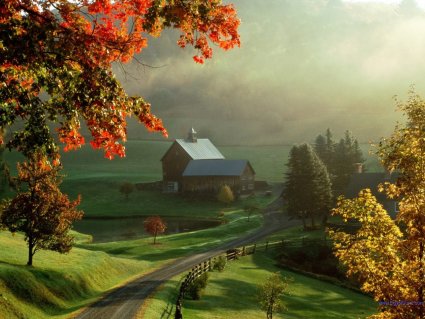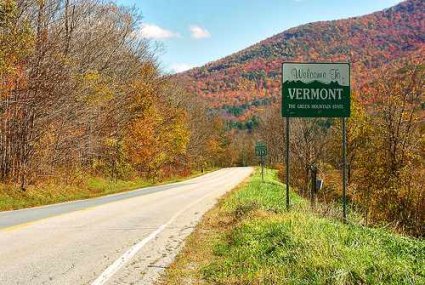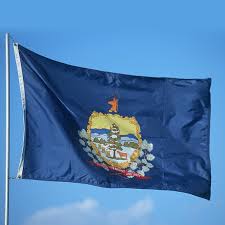US State of Vermont
Vermont is a state in the New England region of the northeastern United States. Vermont is the 6th least extensive and the 2nd least populous of the 50 United States. It is the only New England state not bordering the Atlantic Ocean. Lake Champlain forms half of Vermont's western border, which it shares with the state of New York. The Green Mountains are within the state. Vermont is bordered by Massachusetts to the south, New Hampshire to the east, New York to the west, and the Canadian province of Quebec to the north.
Originally inhabited by two major Native American tribes (the Algonquian-speaking Abenaki and the Iroquois), much of the territory that is now Vermont was claimed by France during its early colonial period. France ceded the territory to the Kingdom of Great Britain after being defeated in 1763 in the Seven Years' War (in the United States locally referred to as the French and Indian War). For many years, the nearby colonies, especially New Hampshire and New York, disputed control of the area (then called the New Hampshire Grants). Settlers who held land titles granted by these colonies were opposed by the Green Mountain Boys militia, which eventually prevailed in creating an independent state, the Vermont Republic. Founded in 1777 during the Revolutionary War, the republic lasted for fourteen years. Aside from the Thirteen Colonies, Vermont is one of only four U.S. states (along with Texas, Hawaii, and California) to have been a sovereign state in its past. In 1791, Vermont joined the United States as the 14th state, the first in addition to the original 13 Colonies. It abolished slavery while still independent, and upon joining the Union became the first state to have done so.
Vermont is the leading producer of maple syrup in the United States. The state capital is Montpelier, which has a population of 7,855 and is the least populous state capital in the country. Vermont's most populous city is Burlington, with a 2010 population of 42,417, which makes it the least populous city in the United States to be the largest city within a state. Burlington's metropolitan area has a population of 211,261.
The annual mean temperature for the state is 43 °F (6 °C). Vermont has a humid continental climate, with muddy springs, a generally mild early summer, hot Augusts;[citation needed] it has colorful autumns: Vermont's hills reveal red, orange, and (on sugar maples) gold foliage as cold weather approaches. Winters are colder at higher elevations.[19] It has a Köppen climate classification of Dfb, similar to Minsk, Stockholm, and Fargo.
The rural northeastern section (dubbed the "Northeast Kingdom") often averages 10 °F (−12 °C) colder than the southern areas of the state during winter. The annual snowfall averages between 60 to 100 inches (1,500 to 2,500 mm) depending on elevation.
Vermont is the seventh coldest state in the country. In winter, until typical El Nino conditions, Vermont's winters are "too cold to snow"; the air is too cold to contain sufficient moisture to prompt precipitation.
From Wikipedia, the free encyclopedia


Education in Vermont
Vermont was named the nation's smartest state in 2005 and 2006. In 2006, there was a gap between state testing standards and national which is biased in favor of the state standards by 30%, on average. This puts Vermont 11th best in the nation. Most states have a higher bias. However, when allowance for race is considered, a 2007 US Government list of test scores shows Vermont white fourth graders performed 25th in the nation for reading (229), 26th for math (247). White eighth graders scored 18th for math (292) and 12th for reading (273). The first three scores were not considered statistically different from average. White eighth graders scored significantly above average in reading. Statistics for black students were not reliable because of their small representation in the testing.
The average effective spending per pupil in Vermont was ,548 in 2008. Education Week ranked the state second in high school graduation rates for 2007.
In 2011, 91% of the population had graduated from high school compared with 85% nationally. Almost 34% have at least an undergraduate degree compared with 28% nationally. In 2013, the ratio of teachers to pupils was the lowest in the country.
Educational Institutes in Vermont
Lyndon Institute, Lyndon Centre, Vermont



